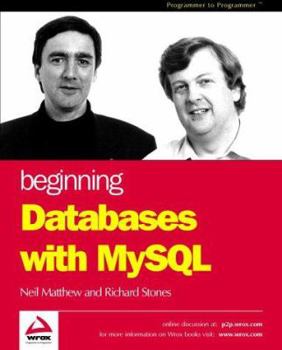Beginning Databases with MySQL
MySQL is an open source relational database management system (RDBMS) that uses Structured Query Language (SQL), the most popular language for adding, accessing, and processing data in a database.... This description may be from another edition of this product.
Format:Paperback
Language:English
ISBN:1861006926
ISBN13:9781861006929
Release Date:February 2002
Publisher:Wrox Press
Length:608 Pages
Weight:2.20 lbs.
Dimensions:1.2" x 7.3" x 9.0"













